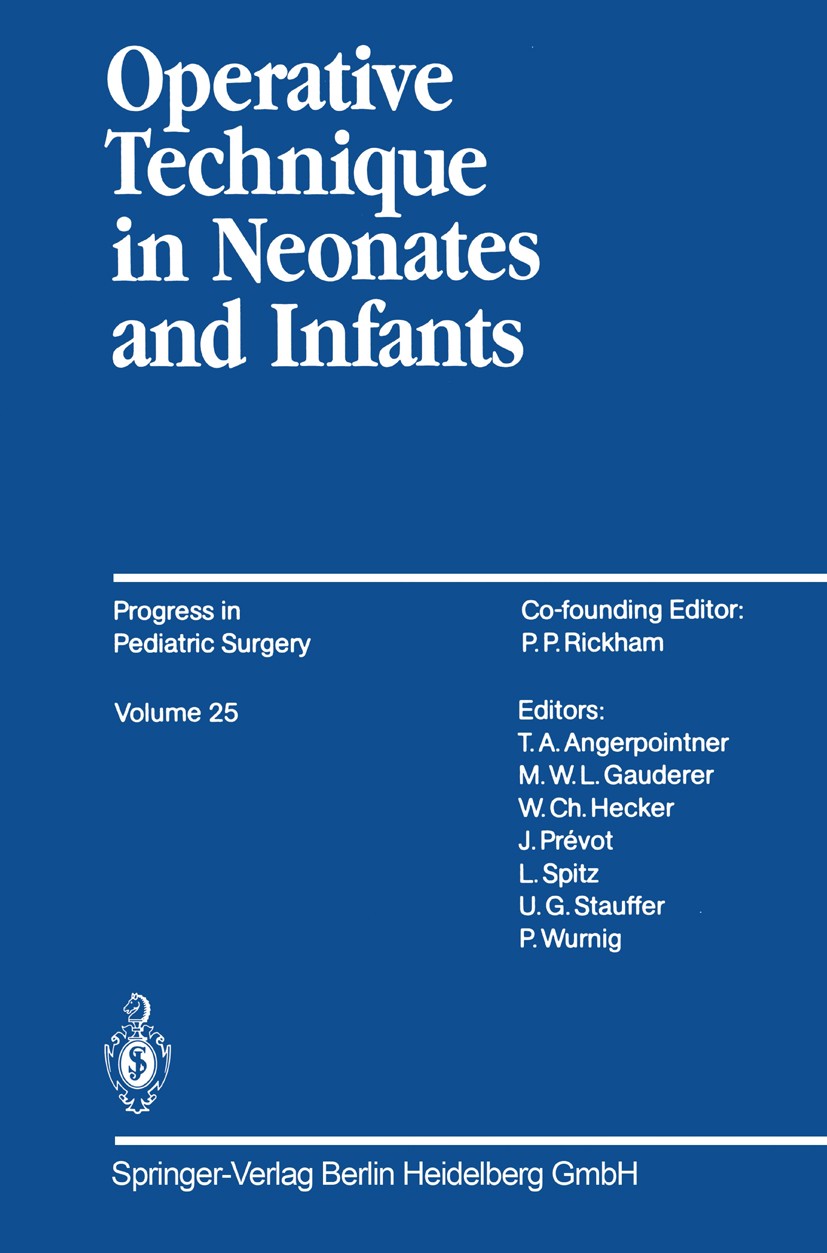| 书目名称 | Operative Technique in Neonates and Infants | | 编辑 | Thomas A. Angerpointner | | 视频video | http://file.papertrans.cn/703/702260/702260.mp4 | | 丛书名称 | Progress in Pediatric Surgery | | 图书封面 |  | | 描述 | In conventional partial resection of parenchymatous organs significant bleeding is one of the main problems, especially in neonates and infants. The patients rapidly lose considerable amounts of their small blood volume. Laser light leads to photo thermal effects in tissue and causes coagulation, drying up, carbonization and evaporization, depending on the temperature. The neodymium Y AG laser emits nonvisible light in the near infrared with a wavelength of l. 0611m. This wavelength implies a relatively deep penetration into the tissue. This laser system, properly a coagulation laser, achieves its cutting effect by its high power density [9]. Because of thermal radiation in all directions, both sides of the section plane are coagulated as a positive side effect. Thus, in parenchymatous organs a combination of resection and sealing of the cut vessels and ducts, up to a limited diameter, is obtained. Laser Instruments We use a neodymium-YAG laser mediLas 2 (MBB-Medizintechnik, D-8012 Ottobrunn, Federal Republic of Germany), wavelength l. 0611m, maximal power output around 110 W (Fig. 1). Normally we prefer to work without tissue contact, Fig. l. The Nd-YAG laser system mediLas 2 wit | | 出版日期 | Conference proceedings 1990 | | 关键词 | Endoscopic Pneumatic Dilatation; Fibrinogen Gluing; Neodymium YAG Laser; Resectoscope; Small Bowel Trans | | 版次 | 1 | | doi | https://doi.org/10.1007/978-3-642-87707-0 | | isbn_softcover | 978-3-642-87709-4 | | isbn_ebook | 978-3-642-87707-0Series ISSN 0079-6654 | | issn_series | 0079-6654 | | copyright | Springer-Verlag Berlin Heidelberg 1990 |
The information of publication is updating

|
|
 |Archiver|手机版|小黑屋|
派博传思国际
( 京公网安备110108008328)
GMT+8, 2025-11-12 16:51
|Archiver|手机版|小黑屋|
派博传思国际
( 京公网安备110108008328)
GMT+8, 2025-11-12 16:51


